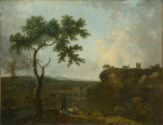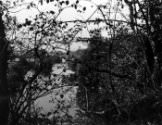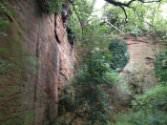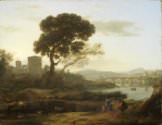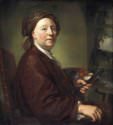Holt Bridge on the River Dee




Holt Bridge on the River Dee
Only Wilson could have recognized that this particular location, at Holt Bridge on the Welsh-English border, was ideal for his intellectual “imitation” of Claude Lorrain. He had known the area all his life. A few miles away on the Welsh side of the border was his cousin’s house, Colomendy, as was Leeswood, the house of another cousin, and also the town of Mold, where the family had moved after the death of Wilson’s father in 1728. On the English side was Farndon, home of the sisters of Thomas Wright, the artist who had taught Wilson to paint. The country house estates that occupied much of the landscape that we see were either managed by or belonged to the Boydell family, one of whom, John, was publishing engravings of Wilson's engravings at this time. The view, with the unmistakably British fourteenth-century tower of St. Chad’s, Farndon, on the right, surmounting an outcrop of red sandstone rock known as Dee Cliffs, is still recognizable today, although Wilson’s vantage point is now on the edge of a housing estate, and the view is obscured by trees.

